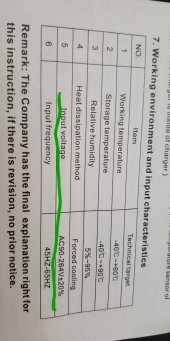Is there a way to build a water turbine to power this battery charger? The AC input is AC90-240V + 20% (see attachment)
What components would I need to get the input voltage within this range?
Would I need a dump load or cutoff switch if I went over or under the voltage?
Any other info is much appreciated.
My place has a seasonal creek that flows pretty decent in the winter time, which happens to be when the sunshine is lacking for PV input, so my thought would be to try and harness this power in my attempt to be totally off grid (hopefully no generator if this worked).
I understand how to setup for a pelton wheel with a low flow/ high pressure scenario. I need help with components to stay within the chargers range.
If this had been discussed please point me to the thread. Thanks in advance.
What components would I need to get the input voltage within this range?
Would I need a dump load or cutoff switch if I went over or under the voltage?
Any other info is much appreciated.
My place has a seasonal creek that flows pretty decent in the winter time, which happens to be when the sunshine is lacking for PV input, so my thought would be to try and harness this power in my attempt to be totally off grid (hopefully no generator if this worked).
I understand how to setup for a pelton wheel with a low flow/ high pressure scenario. I need help with components to stay within the chargers range.
If this had been discussed please point me to the thread. Thanks in advance.



